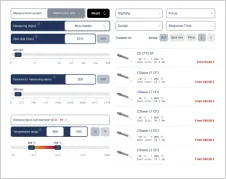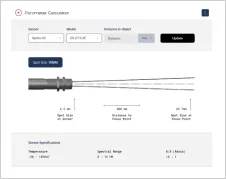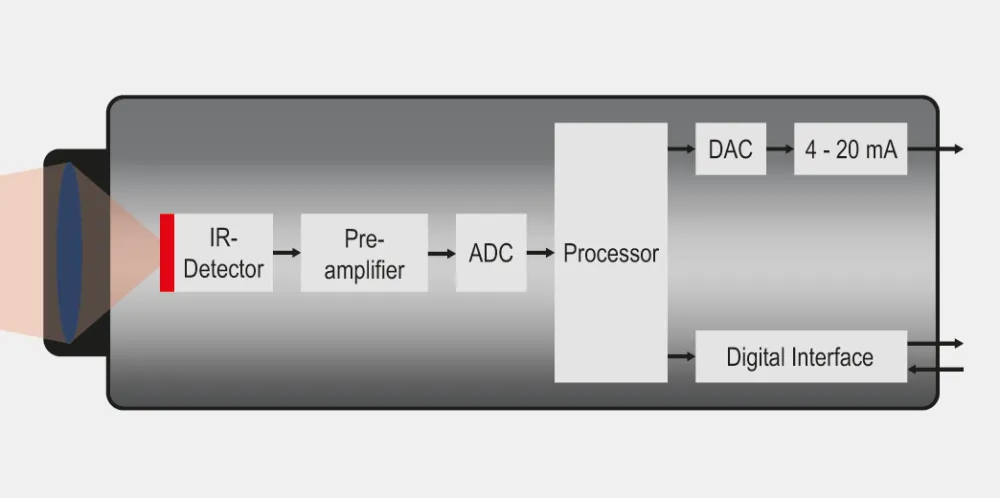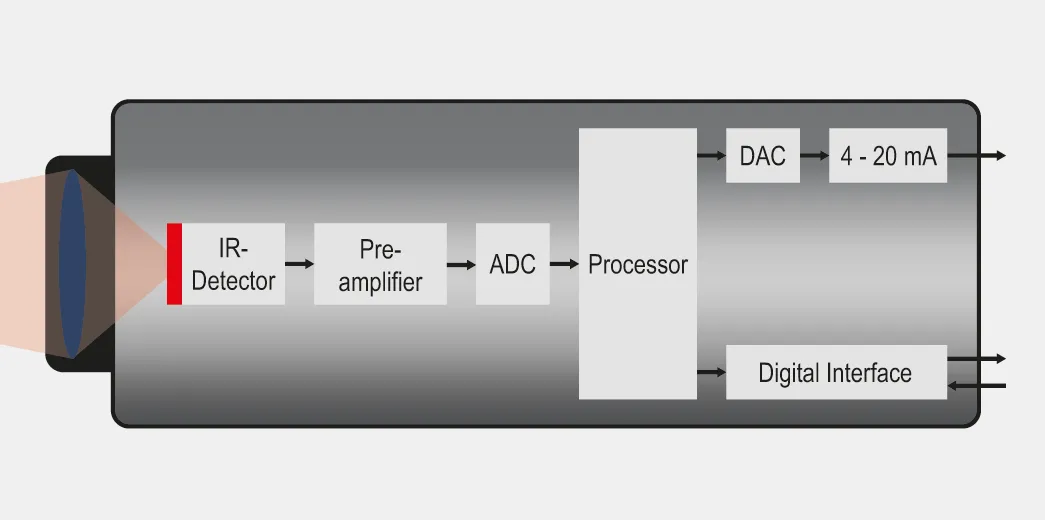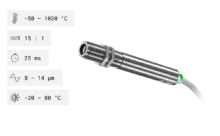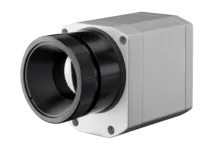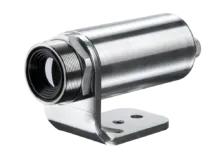
Non-Contact Temperature Measurement
While thermal equilibrium is established between the measurement object and the detector during contact temperature measurement, allowing the detector to assume the object’s temperature and convert it into an electrical signal, the thermal radiation of the measurement object is evaluated from a distance during non-contact temperature measurement. Every body emits electromagnetic radiation depending on its temperature and emissivity. Planck’s law of radiation is used to formulate the relationship between the object’s temperature and the emitted spectral specific radiant power so precisely that the surface temperature of the measured object can be deduced with high accuracy from the evaluation of the detected thermal radiation in reverse order.
The emitted radiation is focused with optics through a spectral filter onto an infrared detector. The spectral filter generally selects the portion of the radiation that is spectrally within an atmospheric window. Depending on the technology used, the infrared detector converts the radiation into a photocurrent or a thermoelectric voltage. This signal is electronically amplified and converted into a digital signal that is directly proportional to the original radiant power at the detector. This signal is then digitally processed by calculating a set emissivity, background radiation, or the influence of the ambient temperature. Further processing steps, such as time averaging or more sophisticated methods like peak hold or valley hold, can be added to optimize the temperature indication.
An accuracy specification of 1 K for temperatures in the range from 0 to 100 °C is common.
Back to LexiconRecommended Products

Talk to us about your IR Temperature Measurement Requirements
Our Infrared Temperature Measurement experts can help you find the right Optris product for your application.

